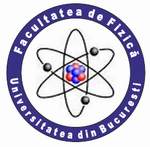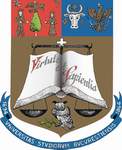| |
 |
UNIVERSITY OF BUCHAREST
FACULTY OF PHYSICS Guest
2025-10-06 0:45 |
 |
|
|
|
Conference: Bucharest University Faculty of Physics 2025 Meeting
Section: Nuclear and Elementary Particles Physics
Title:
Neutron background studies for rare event searches
Authors:
Denis BARBU, Mihaela PARVU, Ionel LAZANU
*
Affiliation:
1) University of Bucharest, Faculty of Physics
E-mail
denis.barbu@g.unibuc.ro
Keywords:
Radioactive background, neutrons, large detectors, (alpha,n) reactions
Abstract:
Rare event searches are of great importance for new insights into the nature of fundamental physics, i.e. whether or not the Standard Model is enough to describe our Universe. Recently, various studies suggest that the Standard Model needs to be refined. Such studies lead to physics Beyond Standard Model. However, rare event experiments require large detectors and low background levels. The first condition can be very troublesome as increasing the dimensions of the detectors gives rise to technical challenges. The latter can be partially solved by operating our detectors deep underground to reduce the cosmic background. However, this is not enough, as a significant background can still be found underground as well, mostly due to the radioactive series of thorium or uranium or due to cosmic muons which can easily penetrate the rock overburden. In our work, we will be concerned with the neutron background, which has three different origins, i.e. muon induced neutrons through spallation, neutron from (alpha,n) reactions on rock and from spontaneous fission of U-238. These neutrons can penetrate the cryostat and produce gamma with energies of around 1 MeV. For a good efficiency in significantly reducing the number of neutrons that enter the active volume, one needs to slow down the neutrons to bring them to energy levels where the absorption cross section for different elements is high. For these reasons, we need to add additional shields to the cryostats with materials that have high hydrogen content, and potentially boron content, as the neutron absorption cross section of B-10 is one of the highest between all elements. Simulations in FLUKA have been made to compare the capabilities of different materials as a neutron shield for the detectors. The neutron spectra coming from (alpha,n) reactions in rock were calculated with SOURCES4 [2]. The gammas produced by the neutrons were also considered.
References:
[1] Viktor Pěč, et. al. "Muon-induced background in a next-generation dark matter experiment based on liquid xenon", https://arxiv.org/pdf/2310.16586
[2] M. Parvu, et. al. "Optimised neutron yield calculations from (α,n) reactions with the modified SOURCES4 code", https://arxiv.org/pdf/2408.10910
Acknowledgement:
This work is supported by the contract CERN-RO/CDI/2024_001.
|
|
|
|

